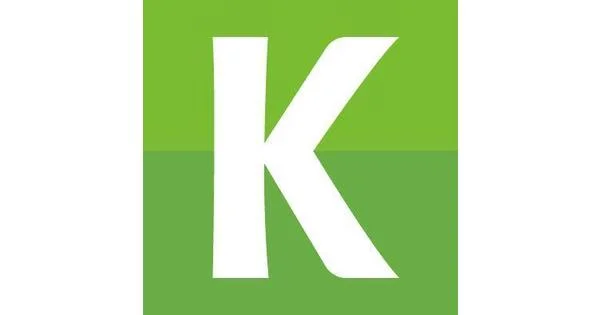Kelly's Trophy Case Is Full, But Its Stock Chart Is Empty. What Gives?
On paper, Kelly Services is having a banner year. The press releases paint a picture of a legacy staffing firm firing on all cylinders, collecting prestigious industry awards like a decorated general. In October, the company announced it had achieved something no other firm has: earning both "Leader" and "Star Performer" status across all four of Everest Group’s 2025 US Contingent Staffing assessments. Add to that its KellyOCG + Sevenstep: No.1 in Deal Size, No.3 Overall ranking from HRO Today, and you have a narrative of undisputed market dominance.
The accolades are specific and impressive. Everest Group, a respected analyst firm, lauded Kelly’s push into high-resilience sectors like semiconductors and renewable energy. They highlighted the company’s digital transformation, its investments in AI and automation, and its strategic shift toward outcome-based contracts. This isn't just a pat on the back; it's an external validation of a forward-looking strategy. The company is telling the world it's no longer just a temp agency from 1946. It's a sophisticated, tech-enabled workforce solutions partner.
So, with a trophy case overflowing and a strategy seemingly blessed by the industry's sharpest minds, one would expect Kelly's stock (KELYA) to reflect this triumph. One would be wrong.
The Glaring Discrepancy
While Kelly’s management was polishing its awards, its stock chart was bleeding red. As of mid-October 2025, KELYA shares hover around $12.30. The 52-week high was approximately $22.40. That’s not a minor dip; it’s a chasm. The company’s entire market capitalization sits at a modest ~$440 million. This is where the slick corporate narrative collides with the cold, hard math of market sentiment.
The market isn't irrational; it's a discounting mechanism. It looks past the press releases and directly at the ledger. And what the ledger shows is a far more complicated picture. Kelly’s Q2 2025 revenue was up 4.2% year-over-year to $1.10 billion, a figure that looks healthy until you see the footnote: growth was boosted by acquisitions. The report also notes organic revenue declines in parts of the core staffing business. This is the first crack in the façade.
But the real tell is the company's own forecast. Management has guided for a Q3 revenue decline of 5% to 7%, citing weaker demand from federal contracts. This is the data point that matters. Awards are, by their nature, lagging indicators reflecting past performance and stated strategy. A revenue warning is a leading indicator, a flare sent up from the engine room signaling rough seas ahead. And this is the part of the report that I find genuinely puzzling: how does a company crowned the undisputed leader of its industry simultaneously guide for a significant revenue contraction?

This disconnect creates a paradox for investors. Wall Street analysts seem to see it, too. Their consensus rating is a lukewarm "Hold," yet their price targets suggest staggering upside. MarketBeat reports an average 12-month target of $25.00, while TipRanks’ average is $21.50. Those figures imply a potential gain of 70% to over 100%—to be more exact, the MarketBeat target is 103% above the current price. It’s a classic sign of a potential value play, but also the hallmark of a potential value trap. The analysts are acknowledging the strategic merit while being terrified of the near-term execution.
The Pivot is the Problem
Kelly's story is essentially a massive corporate pivot. It’s trying to transform itself from a traditional, volume-based staffing firm into a high-margin, tech-driven consulting business. Think of it as a sprawling taxi fleet, with all its legacy infrastructure and costs, trying to rebuild itself into Uber. The destination—a sleek, asset-light, data-driven platform—is undeniably attractive. The awards from Everest Group are validating that the destination is the right one. They’re saying, "Yes, this is what a modern workforce solutions company should look like."
But the market is pricing in the journey, not the destination. It sees the legacy costs, the organic revenue slips, and the vulnerability to macro shifts like government spending cuts. It’s questioning the how, not the what. Can a company with nearly 80 years of history truly rewire its DNA fast enough? The new CEO, Chris Layden, appointed in September 2025, has been handed the keys to a machine that's been lauded for its new design but is currently sputtering.
The praise for Kelly's tech stack—the Kelly Now platform, AI-enabled analytics, e-sign onboarding—is warranted. These are necessary investments. Yet, are these features driving enough new, high-margin business to offset the decay in the traditional, lower-margin segments? The Q3 guidance suggests the answer, for now, is no. The company is running up a "down" escalator. It's making progress, but the prevailing forces are still pulling it backward.
What are the metrics for these awards, anyway? The fact sheet mentions Everest Group evaluates firms on seven factors, including "vision and strategy" and "technology." But how much of that is based on a PowerPoint deck versus audited financial impact? Without seeing the weighting of their methodology, it's hard to know if the awards are celebrating a beautiful blueprint or a finished, revenue-generating skyscraper.
The Market is Pricing in Execution Risk
Ultimately, the divergence between Kelly's industry accolades and its stock price isn't a mystery. It's a clear-eyed assessment of risk. The market isn't ignoring the awards; it's classifying them as a qualitative data point about future potential. But it's weighing that potential against the quantitative reality of current performance and near-term guidance.
The strategy is sound. The investments in technology and higher-value services are correct. The industry recognizes this. But a strategy is just a well-researched opinion until it generates free cash flow. Right now, Kelly Services is a company with an A+ strategy and a C- report card from the stock market. The current valuation isn't an indictment of their vision. It's a hefty discount for execution risk. The question for investors isn't whether Kelly knows where it's going, but whether it can actually get there before the engine stalls.









